SAP Customers Plan to Reinvest in Teams, Skillsets, and Technologies
by Rizal Ahmed, Chief Content Officer, SAPinsider
Many business and IT leaders who run SAP plan to reinvest in their teams and new technologies in the year 2021, according to SAPinsider research. We surveyed 352 members of the SAPinsider community between December 2020 and February 2021 about their budgets, investments, and teams. We also checked in with our executive community to learn about their upcoming plans for the year. The resounding consensus? Downsizing is out — growth is in.
Survey respondents from both studies show that organizations running SAP will increase budgets, investment, and skills in the year 2021. More than half of respondents to our State of the Market survey (63%) said that they are growing their budgets or keeping them the same. Only 16% said they currently have plans to lower their budgets, and 21% have not yet decided.
Our leadership survey found similar results in that 66% of leaders report that their budgets will stay the same or increase.
When it comes to the teams that play a critical role in supporting, implementing, and executing day-to-day operations of the SAP ERP system and associated SAP solutions, both studies show that over 90% of respondents expect their SAP teams to stay the same or grow in the coming year.
The upward trajectory could be driven by pressure on executives and leadership teams to not only maintain core skillsets, but infuse greater knowledge into its workforce around SAP S/4HANA, analytics, artificial intelligence, integration, and automation. These projects have become top priorities, and organizations need to staff accordingly (Figure 1).
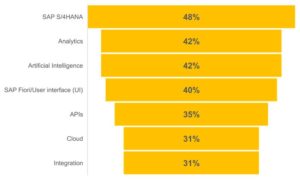
Figure 1 – Skills that IT leaders will be investing in for the year (2021)
The Pandemic Confirms: Transformation is Critical
Most executives were exploring transformation and innovation projects before the pandemic, and the recent disruption only re-establishes the importance of these initiatives. Planning cycles have been dramatically adapted and shortened, putting pressure on organizations to provide constant and immediate views into customer demand and supply chains. A majority of IT leaders interviewed by SAPinsider said that visibility, agility, flexibility, and efficiency have become ‘must-have’ elements of their strategy and technology architectures.
The clarity of these business demands has emboldened leaders to prioritize their innovation agendas and push for change to support new business models and new processes. These areas represent the top two priorities and pressures identified in our 2021 CIO Perspectives Report — 62% of responding executives said that process efficiency was a top business priority for their organization in 2021, while 61% said that supporting new business models and products was a key focus (Figure 2).
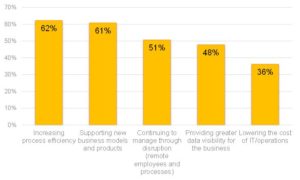
Figure 2 — Top priorities for executives (2021)
Our research drilled down into the specific areas that organizations are looking to invest in, and not surprisingly revenue-generating processes such as sales and e-commerce received the highest responses. Core finance — particularly the processes that relate to working capital — as well as supply chain were not far behind (Figure 3). These processes represent the foundation of many companies’ ERP systems and strategy and were significantly tested during this period of disruption. The data shows that leaders and their teams will continue to balance innovation and operation as they evolve their strategic and tactical plans for 2021.
Simplification and automation were identified as two key focus areas related to business processes. Decisions about whether to move to SAP S/4HANA and the cloud have forced many organizations to fully examine the impact of existing, highly customized processes that are difficult to maintain and integrate. As a result, many executives are looking to leverage their current innovation and migration projects to reset user expectations and embrace more standard processes. These conversations are at the forefront of many IT and business agendas, and have fueled, in part, business process analysis and transformation being at the foundation of the recently introduced RISE with SAP offering.
Companies that may not be making massive moves to the cloud and SAP S/4HANA are still exploring ways to make their business processes more efficient and grow the availability of automation
solutions.
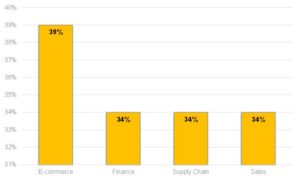
Figure 3 —Top functional investments (2021)
People Hold the Key to Transformation Success
People, enabled by technology, will drive innovation and success moving forward, and remote working and isolation have placed employee health, well-being, and motivation at the center of leaders’ priorities. Most executives that we interviewed reaffirmed that the current environment has tested their leadership skills and forced them to adapt their approach. In fact, issues such as hiring, retention, motivation, training, and change management were among the top challenges cited by our executive community (Figure 4).
“A largely remote workforce is something none of us were prepared for, and in 2021, we are still a virtual workforce,” says Michele D’Alessandro, VP and CIO of Manufacturing IT at Merck & Co. “In 2020, productivity levels were really high, but it has been less than ideal in terms of human interaction,” she explains. “Work and home are so integrated that it’s difficult to draw healthy boundaries and it’s easy to get into a situation where neither situation is healthy.”
To manage through these challenges, many CIOs and other executives are adopting consistent practices of communication, health check-ins, and forming more committees comprised of director and mid-level workers and project teams to ensure there are opportunities to discuss challenges, share victories, and bolster morale in what will be a continued remote environment. Many are also investing in new technologies that facilitate remote working and communication.
As an example, Merck has adopted virtual reality technology in more than 50 locations and for 3,000 workers to enable specialized workers in areas like manufacturing and engineering to work remotely.
But it’s not just keeping employees happy that is critical — just as important is inspiring teams to embrace and lead change in order to keep projects moving forward, particularly those that impact core business processes. When it comes to progress, legacy people are just as dangerous as legacy systems. That is why many executives are getting their most experienced team members involved early on in process analysis and process mining initiatives.
Companies are also putting new user interfaces, mobile applications, and other key solutions in employees’ and users’ hands early so they can see and experience the potential benefits of innovation projects. In some cases, organizations are lifting boundaries around experimentation with new solutions so that innovation can be driven from the bottom up, not just top-down. This approach not only generates new ideas for the organization, but also inspires employees to serve as public advocates and cheerleaders for change.
Gone are the days of multi-year implementation projects to see tangible results. While those projects still exist for complex rollouts, many leaders are promoting more agile projects and methodologies that generate quicker wins and lessons learned. This enables users to understand the potential impact of new innovations more rapidly and provide feedback and ideas to improve the overall project.
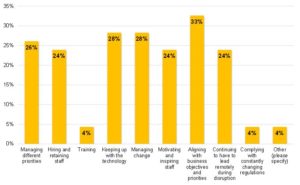
Figure 4 — Top leadership challenges (2021)
Technological Innovation Starts with Core ERP and the Cloud
Most respondents to both surveys indicated that they are spending resources and time on SAP S/4HANA — even if it is only to do a thorough evaluation. Our State of the Market report shows that about one third of respondents are in the process of implementing or have already implemented SAP S/4HANA (Figure 5) and results from our CIO survey are similar: Over 40% are in the evaluation stage or building pilot projects while just over one quarter, 27%, are holding off any plans related to SAP S/4HANA.
Despite findings that most customers are not quite there yet, they see the impending reality of such a major transition. That is why SAP S/4HANA sits at the top of the list when it comes to investments in technologies and skillsets. More than half (51%) of CIOs and executives in our leadership study say that SAP S/4HANA will be their most strategic technology investment in 2021 while 48% say that SAP S/4HANA skills will be among the priorities for adding to their team.
Many leaders see SAP S/4HANA as a foundation for bringing agility, flexibility, and visibility to their core business processes. “We had an antiquated platform that was limiting our ability to do new and innovative things with SAP. For us to implement new functionality, it requires significant effort and testing just to do something new. We cannot support the level of innovation we want with that, and these limitations are driving us to build a new digital platform with SAP S/4HANA,” says Michael Mullis, CIO of Ingevity, a chemical manufacturing company based in South Carolina.
Likewise, the cloud further strengthens companies’ core. Our past research shows that almost two thirds of companies plan to run SAP S/4HANA on a cloud of some sort, but cloud investments will extend far beyond this approach.
Our “State of the Market” report shows that in the year 2021 companies will invest in a variety of cloud solutions including SaaS (53%), private cloud (35%), platform-as-a-service (31%), infrastructure-as-a-service (30%), and hyperscaler solutions (26%). Suffice it to say, many companies will be using a mix of solutions and operating in hybrid environments. Many leaders are adopting a cloud-first strategy to simplify their environments, but also to provide flexibility and speed when it comes to infrastructure and resources. This strategy will require new skillsets around cloud and integration.
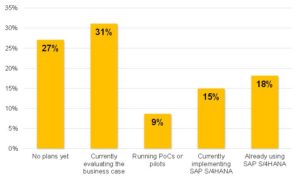
Figure 5 — Companies current plans for SAP S/4HANA (2021)
The Triple “As” of Technology and Skills Investment
Operations are critical, but so too are visibility and intelligence, and these are enabled by analytics. According to our State of the Market Report, 42% of respondents will increase or significantly increase their investment in analytics. The past year has demonstrated why it’s important to have visibility into all aspects of the business so that companies can react, make decisions on the fly, and model new scenarios in real-time.
Respondents also plan to invest in the cloud (39%), robotic process automation (33%), integration (32%), and artificial intelligence (32%). Operation efficiency and leveraging data to make processes and analytics more intelligent are clear imperatives for most organizations.
Executives and their teams are likewise prioritizing the acquisition of talent and skills that support these technologies. The top in-demand skills include analytics (42%) followed by cloud and infrastructure (24%), and artificial intelligence and machine learning (20%), according to our State of the Market study.
What Does This Mean for Executives?
Accelerate the transformation of your core. Cloud and SAP S/4HANA are not just options but priorities for those that are sticking with SAP ERP. Even if you do not move right away, advance your knowledge and understanding of SAP S/4HANA and its impact on process, architecture, and overall functionality.
Focus on your people and culture when it comes to change. Most leaders acknowledge that strategy and technology mean nothing if you do not have buy-in from all levels of your organization. Successful leaders are getting their people involved by helping them understand the technology and its potential impact. Many are putting early pilots in their hands and giving them free reign to use and experiment.
Fail quickly and often so that you can learn. Agile methodologies for pilots and running projects are ramping up for many early adopters. This type of innovation environment allows companies to experiment and learn without wasting a lot of time or significantly impacting existing operations. Start small with areas that can show quick wins and tangible results. Leverage the cloud to quickly roll out applications and experiment with new technologies.
Aggressively expand your skills across the three “As”. In addition to cloud and SAP S/4HANA, analytics, artificial intelligence, and automation are important to delivering increased value to your business as well as supporting innovation. As many leaders discuss transformation, business processes are at the core of that discussion. It is not just about efficiency, but intelligence and visibility. These technologies offer a way to unlock critical value at the process level.








